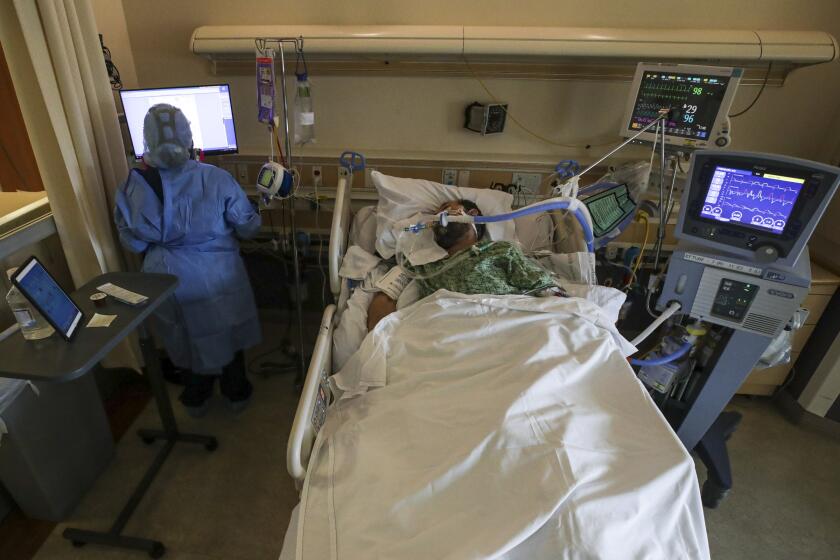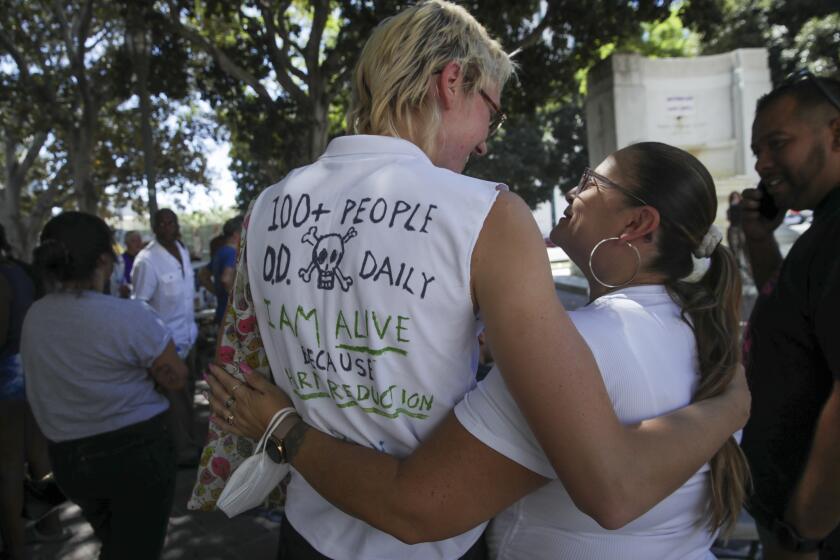Ronald Bracewell, 86; developed techniques used in CT, MRI scans
Ronald Bracewell, the Stanford University polymath who developed mathematical techniques for producing images with radiotelescopes that are now widely used in CT and MRI imaging for medicine, died of a heart attack at his home on campus July 12. He was 86.
Trained as a mathematician, physicist and electrical engineer, he combined his abilities to study the heavens, concentrating on radioastronomy.
He adapted a complex mathematical process called a Fourier transform to extract images from radio signals, and his adaptation was subsequently used to extract images in computed tomography and magnetic resonance imaging.
“Many of Ron’s inventions have flourished in other fields of science and engineering,” said Umran Inan of Stanford. “CAT scans and, basically, the imaging of objects by scanning them with radio and electromagnetic methods are all things that originated with him.”
In 1961, Bracewell built a complex array of 32 radiotelescope dishes west of Stanford’s main campus that he used to monitor the surface of the sun for 11 years, producing daily maps of surface temperature. The telescope was the first that produced output automatically in a printed form that could be disseminated worldwide by teleprinter.
NASA relied on the system for warnings of sunspot eruptions during the first moon landing.
The 32 small dishes at the site were demolished in the 1970s and replaced with five larger dishes that were subsequently named the Bracewell Observatory.
The five obsolete dishes were demolished last year after the university concluded that they had no historic value and that the site posed a fire hazard.
Bracewell tracked the first Soviet satellite, Sputnik I, and determined that it was stabilized by spinning around its long axis like a pencil spinning around its lead.
He concluded that America’s first satellite, Explorer I, was unstable in design and tried to call engineers at the Jet Propulsion Laboratory in La Cañada Flintridge to warn them, but was prevented from doing so by security people at JPL. He resorted to publishing a paper in the open literature, but unfortunately it did not appear until seven months after the satellite’s launch.
Explorer I made one orbit of the Earth before it flipped over and began windmilling out of control.
He subsequently tracked other Soviet spacecraft and provided their orbital information to news media so that they could be observed by the public.
He also was the coauthor, with his Australian mentor J.L. Pawsey, of “Radio Astronomy,” the first significant textbook in the field.
Later in his career, he became interested in the possibility that life exists elsewhere in the universe and wrote the 1975 book, “The Galactic Club: Intelligent Life in Outer Space.”
He argued that other civilizations, if they existed, would most likely attempt to contact people on Earth using robotic probes. Such automated craft have subsequently come to be known as Bracewell probes.
He played an active role in SETI, the Search for Extraterrestrial Intelligence, and adapted Fourier transforms to help sift through the thousands of wavelengths monitored in the so-far unsuccessful search for a signal from another civilization.
When then-Sen. William Proxmire (D-Wis.) tried to cut off government funding for SETI in 1981, Bracewell said “I think he’s crazy. . . . It’s the usual custom here and abroad to leave the judgment about scientific inquiry to people qualified to do the work.”
Government funding was finally ended in 1991 and the project has continued with private funding.
Space was not Bracewell’s only interest, however. He became a self-taught expert on trees and in 2005 published a 300-page book, “Trees of Stanford,” that documented the more than 350 species of trees on campus.
Over the years, he led many tree tours on the campus and, in the late 1970s, taught an undergraduate seminar called I Dig Trees.
Ronald Newbold Bracewell was born July 22, 1921, in Sydney, Australia. He received his bachelor’s and master’s degrees from the University of Sydney and his doctorate in physics in 1950 from Cambridge University in England.
During World War II, he designed and developed microwave radar equipment for Australia’s Commonwealth Scientific and Industrial Research Organization.
After receiving his doctorate, he returned to Australia for four years before moving to the United States in 1954.
After a year at UC Berkeley, he moved to Stanford, where he spent the rest of his career.
His contributions to medical imaging led him to become a foreign associate of the prestigious Institute of Medicine, the first Australian to win that honor.
He also was a founder and editorial board member of the Journal for Computer-Assisted Tomography, as well as a frequent contributor.
He is survived by his wife of 54 years, Helen; a brother, Mark, of Melbourne; a son, Mark, of San Jose; a daughter, Wendy, who lives in England, and two grandchildren.
A campus memorial service will be held sometime after the start of fall classes.
--



